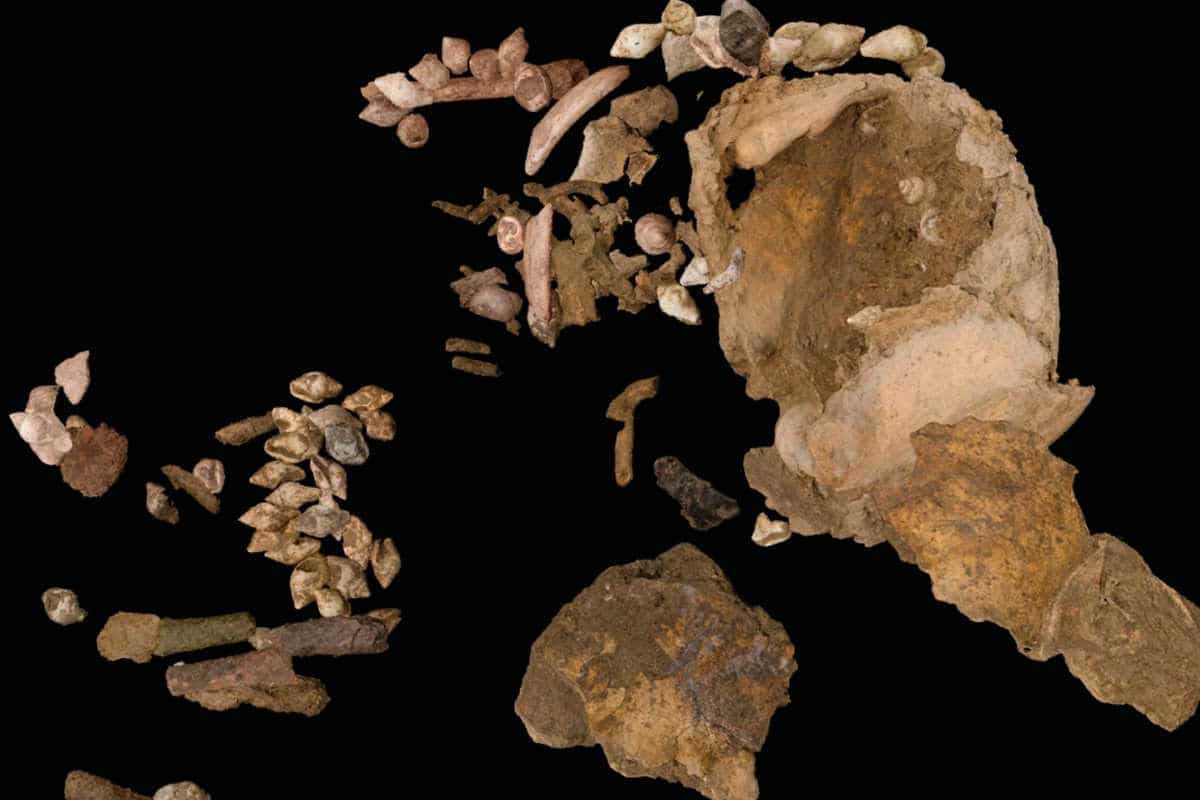
The child was buried with various grave goods, which shows that even the very youngest were recognized as full-fledged persons at the time.
About 10,000 years ago, just after the last ice age, a group of hunter-gatherers buried a young girl — still a baby — in a cave in modern-day Italy. The child was laid to rest along with a rich selection of precious beads and pendants and an eagle owl claw – a sign of grief. Researchers now have in a new study studied the thousands of years old tomb further. A rare opportunity, which they believe provides a unique insight into the ‘evolution of personality’.
Discovery
Archaeologists found the baby grave in the Arma Veirana cave, located in northwestern Italy. They had been doing research here for several years. They had already found so-called ‘Mousterian tools’ there; more than 50,000-year-old stone tools believed to have been made by European Neanderthals. The researchers decided to explore new parts of the cave, where they soon encountered pierced shell beads. Just days later, they dug up a small piece of the girl’s skull. “It quickly became clear that we were not just looking at a human skull here, but also a very young person,” said study researcher Claudine Gravel-Miguel.
Neve
The researchers managed to uncover the entire skeleton, which was surrounded by shell beads. And that leads to some interesting discoveries. For example, the child named Neve appears to have lived about 10,000 years ago. She probably died about 40 to 50 days after her birth, after which she was buried with various grave goods and decorations. Research into these ornaments shows the remarkable care that has gone into each piece.

This drawing shows the way Neve was laid to rest. Image: Claudine Gravel-Miguel
The tomb offers important new insight into burial practices during the Mesolithic period, the researchers say; a culture period that followed the last ice age. “The Mesolithic is particularly interesting,” said researcher Caley Orr. “It represents the last period in Europe when hunting and gathering were the main way of life. So it is a very important period to understand human prehistory.”
Little digging
Moreover, few graves from this crucial period have been found. “We’ve discovered quite a few tombs dating back to before 14,000 years ago,” said researcher Jamie Hodgkins. “But much less is known about burial practices from the earliest part of the Mesolithic. Moreover, funerals of babies are even rarer. Neve therefore fills an important gap.”
Funeral Practices
According to the researchers, the discovery of the 10,000-year-old baby grave provides a unique insight into the ‘evolution of personality’. That’s because funeral practices provide insight into the worldview and social structure of past societies. “The evolution and development of how early humans buried their dead has tremendous cultural significance,” Hodgkins says. The way Neve was buried, accompanied by various grave goods, is therefore significant. Because according to the researchers, the baby grave shows that even the very youngest were recognized as full-fledged persons.
The researchers suspect that this recognition of infants as full-fledged individuals may have a distant origin. This may be traced back to a common, ancestral culture. Subsequently, this was adopted by several populations that migrated to Europe and North America. On the other hand, it may also be possible that that recognition developed independently and was reflected in different populations from around the world. Perhaps future research will provide more clarity.
Source material:
“Earliest adorned female infant burial in Europe significant in understanding evolution of personhood” – Arizona State University
Image at the top of this article: Hodgkins et. already.